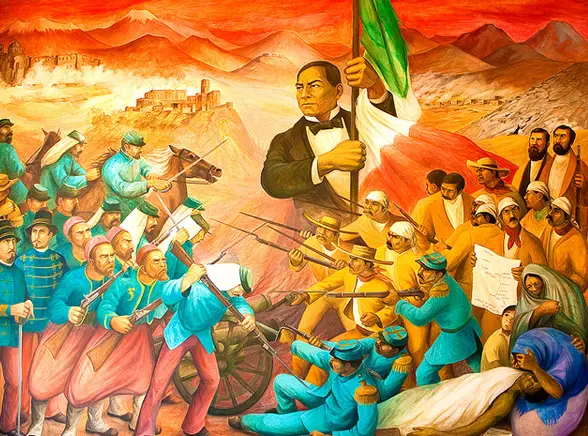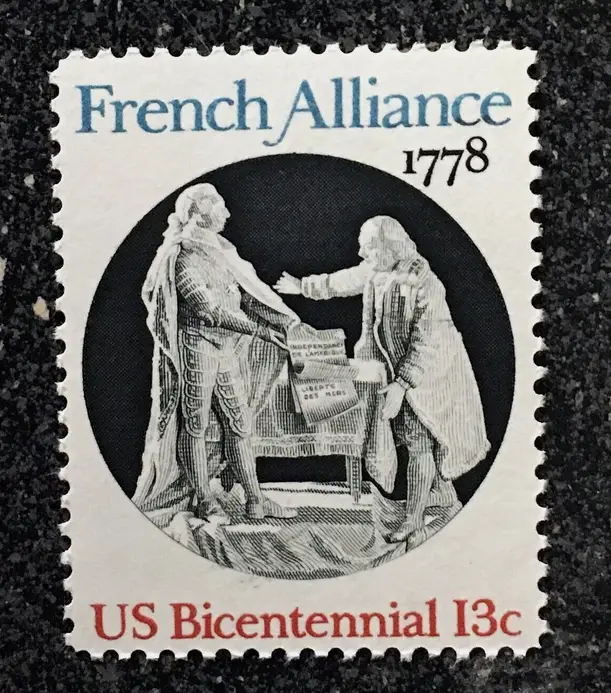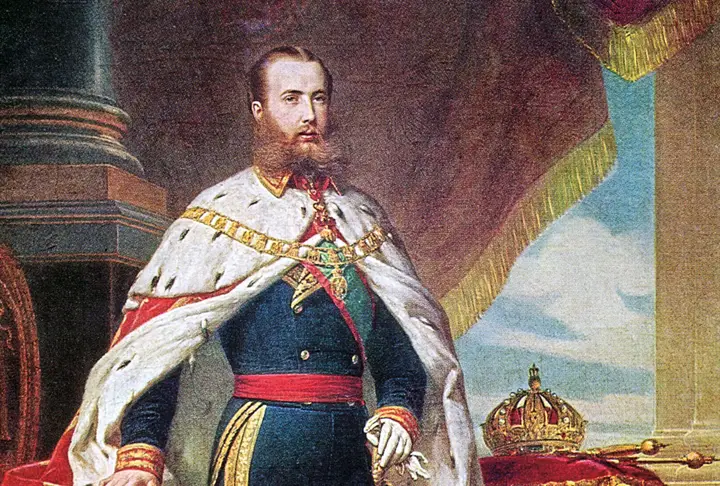Podcast: Play in new window | Download
Subscribe: Apple Podcasts | RSS
 The date was May 5, 1862, and the place was the city of Puebla in the Mexican state of the same name. Led by General Ignacio Zaragoza, the outnumbered and ill-equipped Mexican army stood resolute against the advancing French forces. Despite facing overwhelming odds, the Mexican troops displayed remarkable courage and determination, ultimately emerging victorious in a stunning upset. The Battle of Puebla, while not a decisive military victory, served as a symbol of Mexican unity, resilience, and defiance against foreign intervention. Soon after the battle, Benito Juárez issued a decree and proclaimed “Cinco de Mayo” a national holiday. The Mexican victory only served to underscore the need for more French troops to be sent to Mexico, and by next May the French defeated the Mexicans in the Second Battle of Puebla and later marched to take Mexico City. While the May 5th Battle of Puebla was important, it ultimately did nothing to stop the inevitable and Mexico got its Second Empire to be ruled by Emperor Maximilian, an Austrian prince.
The date was May 5, 1862, and the place was the city of Puebla in the Mexican state of the same name. Led by General Ignacio Zaragoza, the outnumbered and ill-equipped Mexican army stood resolute against the advancing French forces. Despite facing overwhelming odds, the Mexican troops displayed remarkable courage and determination, ultimately emerging victorious in a stunning upset. The Battle of Puebla, while not a decisive military victory, served as a symbol of Mexican unity, resilience, and defiance against foreign intervention. Soon after the battle, Benito Juárez issued a decree and proclaimed “Cinco de Mayo” a national holiday. The Mexican victory only served to underscore the need for more French troops to be sent to Mexico, and by next May the French defeated the Mexicans in the Second Battle of Puebla and later marched to take Mexico City. While the May 5th Battle of Puebla was important, it ultimately did nothing to stop the inevitable and Mexico got its Second Empire to be ruled by Emperor Maximilian, an Austrian prince.
So, to make it clear, Cinco de Mayo is not the Mexican Fourth of July. It is not Mexican Independence Day. It was just meant to celebrate a victory in a battle, nothing more. It’s not even a holiday that is widely celebrated throughout Mexico. It is more popular north of the border, and more on why that is later.
The internet is full of revisionist history which is borderline fanciful to outright absurd. On a Facebook post I made about Cinco de Mayo years ago, a young person went on in the comments section about how the United States owed that ragtag group of Mexican troops a debt of gratitude because if they had not stopped the French at the Battle of Puebla, the army of the Empire of France would have kept marching north and would have taken over the United States. He concluded that, “the Mexicans saved the gringo asses from being taken over by the French. You owe us.” When I asked him where he got this crazy idea, he claimed that a professor at his local community college lectured about it in a course on Mexican history. We’ve all seen the wild speculative history out there – from who were the true first Mexicans to where the pyramids came from – but this idea about Cinco de Mayo was not limited to the sketchy corners of the internet. There are many  reasons why the bizarre notion is not true. First, if the French had marched due north, they would have been crossing the Rio Grande into the Confederate States of America and not the United States of America. This is because in May of 1862 the US was busy fighting the Civil War. Second, the French had no designs on conquering the United States as they had been one of America’s oldest allies dating back to the time of the American Revolution. This strange theory may have been a morphed interpretation of the ideas of a late 19th-Century Mexican historian and political leader Justo Sierra who claimed that if the Mexicans didn’t stop the French at the Cinco de Mayo battle, the French would have marched north and helped the Confederacy in the US Civil War, and the destiny of the US would have been altered. This, too, is wrong. Not only did the French not have any designs on acquiring any new North American territory, but they were also explicitly told by US government officials at the outset of the Civil War that any support to the Confederacy would be considered an act of war. It seems like the desire of “you owe us” has some deeper roots that go beyond a mere community college instructor with an agenda.
reasons why the bizarre notion is not true. First, if the French had marched due north, they would have been crossing the Rio Grande into the Confederate States of America and not the United States of America. This is because in May of 1862 the US was busy fighting the Civil War. Second, the French had no designs on conquering the United States as they had been one of America’s oldest allies dating back to the time of the American Revolution. This strange theory may have been a morphed interpretation of the ideas of a late 19th-Century Mexican historian and political leader Justo Sierra who claimed that if the Mexicans didn’t stop the French at the Cinco de Mayo battle, the French would have marched north and helped the Confederacy in the US Civil War, and the destiny of the US would have been altered. This, too, is wrong. Not only did the French not have any designs on acquiring any new North American territory, but they were also explicitly told by US government officials at the outset of the Civil War that any support to the Confederacy would be considered an act of war. It seems like the desire of “you owe us” has some deeper roots that go beyond a mere community college instructor with an agenda.
Many people who know Cinco de Mayo as merely a drinking holiday may be wondering why the French were in Mexico to begin with. The French troops engaging with the Mexicans at the Battle of Puebla was not the first time that France invaded the United States’ neighbor to the south. This is why, historically, this series of events in the early 1860s is known as the Second French Intervention. The First French Intervention happened in 1838 and is also known as the Pastry War, the subject of Mexico Unexplained Episode number 134. https://mexicounexplained.com/the-pastry-war-1838-1839/ The French came back for a variety of reasons. Let’s set the historical stage.
After the Mexican War in the 1840s and the Reform War which happened from 1858 to 1861, the Mexican government found itself in dire financial straits. On July 17, 1861, Mexican President Benito Juárez declared a temporary suspension of all foreign debt payments for two years. This action prompted France, Spain, and the United Kingdom to convene in London and form an alliance to demand reimbursement. The three European powers sent naval vessels positioned off Mexico’s eastern coasts as a show of force and occupied the port city of Veracruz in December of 1861. France, led by Emperor Napoleon III, saw Mexico’s financial vulnerability as an opportunity to establish a favorable empire in Mexico to be headed by a monarch from a European royal family. Despite  negotiations with Britain and Spain leading to the peaceful withdrawal of their navies, France proceeded with military action, landing more troops at Veracruz in late 1861 and subsequently advancing towards Mexico City. The French had support of the Mexican conservatives, the Catholic Church and elite classes which welcomed a return to a monarchy. The French army faced staunch resistance from the Mexican forces near Puebla, particularly at the forts of Loreto and Guadalupe. On May 5, 1862, the Mexican army, despite being outnumbered and ill-equipped, achieved the now-famous decisive victory over the French forces. This triumph served as a significant morale boost for Mexico, fostering a sense of national unity and patriotism. As mentioned previously, as a response, the French sent in more troops – 30,000 to be exact – and eventually the anti-liberal, pro-French factions got their way and installed the Austrian archduke Maximilian as Mexico’s second emperor. Historians theorize that had the United States not been so preoccupied with its civil war that none of this would have ever happened. While many European governments recognized Emperor Maximilian as the legitimate ruler of Mexico, when the Civil War ended the US made it very clear that it supported the republican government under former President Juárez. Using the Monroe Doctrine as a justification, the Americans began sending arms to the factions opposing the French-backed European emperor. By 1866, the French withdrew all their troops from Mexico. With waning support from both the conservatives and monarchists themselves, the Second Mexican Empire ended the very next year, and His Imperial Majesty Emperor Maximilian the First of Mexico died at the hands of a firing squad on June 19, 1867.
negotiations with Britain and Spain leading to the peaceful withdrawal of their navies, France proceeded with military action, landing more troops at Veracruz in late 1861 and subsequently advancing towards Mexico City. The French had support of the Mexican conservatives, the Catholic Church and elite classes which welcomed a return to a monarchy. The French army faced staunch resistance from the Mexican forces near Puebla, particularly at the forts of Loreto and Guadalupe. On May 5, 1862, the Mexican army, despite being outnumbered and ill-equipped, achieved the now-famous decisive victory over the French forces. This triumph served as a significant morale boost for Mexico, fostering a sense of national unity and patriotism. As mentioned previously, as a response, the French sent in more troops – 30,000 to be exact – and eventually the anti-liberal, pro-French factions got their way and installed the Austrian archduke Maximilian as Mexico’s second emperor. Historians theorize that had the United States not been so preoccupied with its civil war that none of this would have ever happened. While many European governments recognized Emperor Maximilian as the legitimate ruler of Mexico, when the Civil War ended the US made it very clear that it supported the republican government under former President Juárez. Using the Monroe Doctrine as a justification, the Americans began sending arms to the factions opposing the French-backed European emperor. By 1866, the French withdrew all their troops from Mexico. With waning support from both the conservatives and monarchists themselves, the Second Mexican Empire ended the very next year, and His Imperial Majesty Emperor Maximilian the First of Mexico died at the hands of a firing squad on June 19, 1867.
If Cinco de Mayo doesn’t celebrate the total defeat of the French and it’s not Mexican Independence Day, then why is it so important? This is an interesting question, and as stated before, the holiday is not so much celebrated in Mexico, but it is important in the US. Why is it more important north of the border? At one time in Mexico’s history, it was important, during what is called “The Porfiriato” which was the decades-long reign of Mexican president Porfirio Díaz. Díaz had fought at the Battle of Puebla – the original Cinco de Mayo – and some historians believe he pushed the holiday to reinforce his own image of being a patriot in the eyes of the Mexican people. In Mexico, by the beginning of the 20th Century, the holiday fell out of favor and today it is not even a federal holiday there. This is interesting because over time, Cinco de Mayo has increased in importance on the US side of the border.
 Celebrations of the Cinco de Mayo victory over the French were almost immediate among Mexicans and Mexican Americans residing in California at the time of the battle. From mining camps to the larger urban centers such as Los Angeles, people celebrated with fireworks, shooting guns into the sky and much song, dance and drinking. The celebrations became more formalized throughout the late 19th Century with organizers forming juntas to raise money to pay for local festivities and to funnel to Mexican causes in the United States or to send to groups in Mexico. By the early 20th Century, the celebrations surrounding Cinco de Mayo started to emphasize Mexican pride and expanded out of California to major cities in the US where there were large populations of Mexicans or Mexican Americans. By the 1950s and 1960s, the growing Chicano movement adopted the holiday as a celebration of La Raza and all things Mexican and Mexican American. The Mexican triumph over the French Empire also served to motivate those in the Chicano movement who were struggling for civil rights in the United States. By that time in history, the Cinco de Mayo holiday was less of an import and more of an American holiday with distinct characteristics of its own. It became a day for Latinos and others to recognize and celebrate
Celebrations of the Cinco de Mayo victory over the French were almost immediate among Mexicans and Mexican Americans residing in California at the time of the battle. From mining camps to the larger urban centers such as Los Angeles, people celebrated with fireworks, shooting guns into the sky and much song, dance and drinking. The celebrations became more formalized throughout the late 19th Century with organizers forming juntas to raise money to pay for local festivities and to funnel to Mexican causes in the United States or to send to groups in Mexico. By the early 20th Century, the celebrations surrounding Cinco de Mayo started to emphasize Mexican pride and expanded out of California to major cities in the US where there were large populations of Mexicans or Mexican Americans. By the 1950s and 1960s, the growing Chicano movement adopted the holiday as a celebration of La Raza and all things Mexican and Mexican American. The Mexican triumph over the French Empire also served to motivate those in the Chicano movement who were struggling for civil rights in the United States. By that time in history, the Cinco de Mayo holiday was less of an import and more of an American holiday with distinct characteristics of its own. It became a day for Latinos and others to recognize and celebrate  the cultural and historical ties between the US and Mexico. Fast forward a few decades to the 1990s and big business jumped on the Cinco de Mayo bandwagon, especially beer companies and restaurant chains. By the early 2010s, alcohol sales for Cinco de Mayo had eclipsed those for the Super Bowl and Saint Patrick’s Day. Many municipalities throughout the United States have official events to celebrate the holiday which include folkloric dances and mariachi performances, alongside food and craft vendors. Let’s not forget the beer gardens. The annual Cinco de Mayo festival in Los Angeles is said to attract hundreds of thousands of people.
the cultural and historical ties between the US and Mexico. Fast forward a few decades to the 1990s and big business jumped on the Cinco de Mayo bandwagon, especially beer companies and restaurant chains. By the early 2010s, alcohol sales for Cinco de Mayo had eclipsed those for the Super Bowl and Saint Patrick’s Day. Many municipalities throughout the United States have official events to celebrate the holiday which include folkloric dances and mariachi performances, alongside food and craft vendors. Let’s not forget the beer gardens. The annual Cinco de Mayo festival in Los Angeles is said to attract hundreds of thousands of people.
What began as a declaration of remembrance for an important Mexican battle has transformed into a multi-billion-dollar celebration that includes members from all cultures and nationalities in the festivities. At the core of it all, Cinco de Mayo seeks to celebrate Mexican culture and the resilience of the Mexican people. The holiday’s growth in popularity has not seemed to have reached its peak yet as events become larger and more elaborate with each passing year.
REFERENCES
Hayes-Bautista, David. El Cinco de Mayo: An American Tradition. Berkeley: University of California Press, 2012. We are Amazon affiliates. Buy the book on Amazon here: https://amzn.to/4duI9uU
